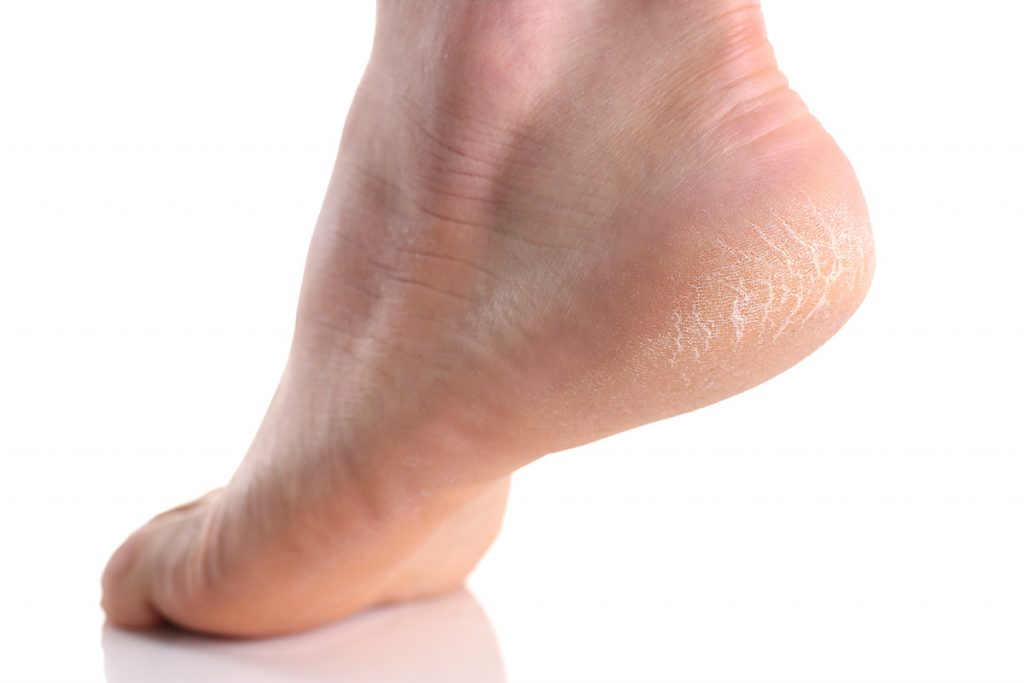Sandal season is upon us. Are you embarrassed by your dry and cracked heels? If so, do not be dismayed. Cracked heels are common, especially in arid parts of the country. While you may look forward to warmer weather with great enthusiasm, pulling out your open-toed shoes may cause you to cringe just a little. The great news is, there are easy and effective fixes for cracked heels that will have you embracing your sandals and the summer weather in no time.
Why do my heels crack?
As you may think, having dry skin is one of the primary causes of cracked heels. However, it is not the only one. Here are a few reasons why you may experience issues with dry and cracked heels.
- Standing for long periods on hard floors
- Having calluses
- Being obese – this puts extra pressure on the heels
- Skin conditions such as athletes foot, psoriasis, or eczema
And this one is a real kicker…wearing shoes or sandals with open backs. That’s right, the very thing you want to do -wear sandals – can actually promote dry heels!
Some cracks are simply minor irritations, while others can cause bleeding and discomfort – making it difficult to walk and opening up the skin to infection. This is why it is important to get on top of cracked heels immediately and work to prevent the issue in the first place.
Healing your heels
Here are some expert tips to keep your heels looking great all year long!
Drink more water
It might be hard to make the connection between cracked heels and water consumption, but if you aren’t drinking enough, your skin -the body’s largest organ – will notice. According to Garrett Moore, DPM, DABPM, a podiatrist at UCHealth Stapleton Foot and Ankle Center,
“Your skin can lose around a liter of water throughout the day—more in dry climates—so keeping yourself hydrated goes a long way toward preventing or soothing dry, cracked skin.”
Aim to drink half your body weight in ounces daily, more if you are active or if it is really hot.
Try manuka honey
Manuka honey
Manuka honey is the perfect option for deep heel cracks that just won’t go away. Not only is this rich gift from the bees an excellent moisturizer, but it can also keep infection at bay and speed up healing.
Hospitals worldwide are now using active manuka honey alongside conventional medication to treat several conditions and help heal wounds. During the Civil War, honey was applied liberally to soldiers’ injuries. Today, scientists are finding out that manuka honey can stop dangerous infections in their tracks.
Professor Elizabeth Harry, from the University of Technology, Sydney, reported in the journal PLOS ONE that manuka is the best honey for stopping bacterial infections and wounds. Also, manuka honey has been shown effective in the treatment of eczema, burns, dermatitis, and abscesses.
The FDA authorized the very first honey-based medical product for use in America. Derma Sciences uses Manuka honey for their Medihoney burn and wound dressings, which you can find online and in medical supply stores. This product is perfect for deep heel cracks and will help speed up healing while keeping infection at bay.
Soak your feet
There is nothing more relaxing than a warm foot soak. Soaking your feet is a great way to moisturize and get your heels ready for sandals. If you suffer from dry skin, this is the perfect soak for you. Repeat weekly to keep your feet looking fantastic.
What you need
- 1 cup of raw honey
- 1 cup of coconut milk
- 1 tsp cinnamon
How to do it
- Place the honey and coconut milk in a small bowl and dissolve by pouring boiling water on top.
- Add the mixture to a tub of hot water.
- Sprinkle the cinnamon powder into the water.
- Soak feet for 30 minutes, pat dry, and apply moisturizer and socks.
Note: Take advantage of your foot soak session to light a few candles, play some soft music, enjoy a cup of tea, and put on your favorite face mask. If you have a lot of dead skin, take time when your feet are soft to remove dead skin cells using a foot scrubber or pumice stone.
More options for dry and cracked heels
Here are some more things you can do to keep your feet healthy and looking great
- Alternate open shoes with closed shoes – To protect your feet, try alternating between sandals and closed-toed shoes with socks. When you wear closed-toed shoes, use a moisturizer on your feet. The longer your feet are exposed to dry air and the elements, the more likely it is that they will crack. The alternating shoe method gives your feet time to recover and moisturize.
- Plastic bag treatment – Although it may be slightly uncomfortable, you will get used to it. Moisturize your feet and place them in a plastic bag. Put socks on top and go to bed. This method helps to keep fluids in your skin where they belong. Alternatively, you can purchase moisturizing socks which are more comfortable than a plastic bag.
- Use a pumice stone softly – Using a pumice stone when your feet are moist is a great way to get rid of dry and dead skin. However, using it on dry feet aggressively can make problems worse. Be gentle and always follow up a pumice stone session with a moisturizer.
- Keep your feet clean and dry – Be sure to thoroughly wash your feet in the bath or shower and keep them dry. Doing this will keep them clean and reduce the chance of any fungal issues that can lead to cracked feet and heels.
Follow these simple steps to save your heels and confidently sport your sandals!

